Atelier de Chronométrie AdC #1 and AdC #2 – As Hand-Made As Possible
Loosely based on 1950's Omega movements, now rebuilt by hand, in the most traditional way!
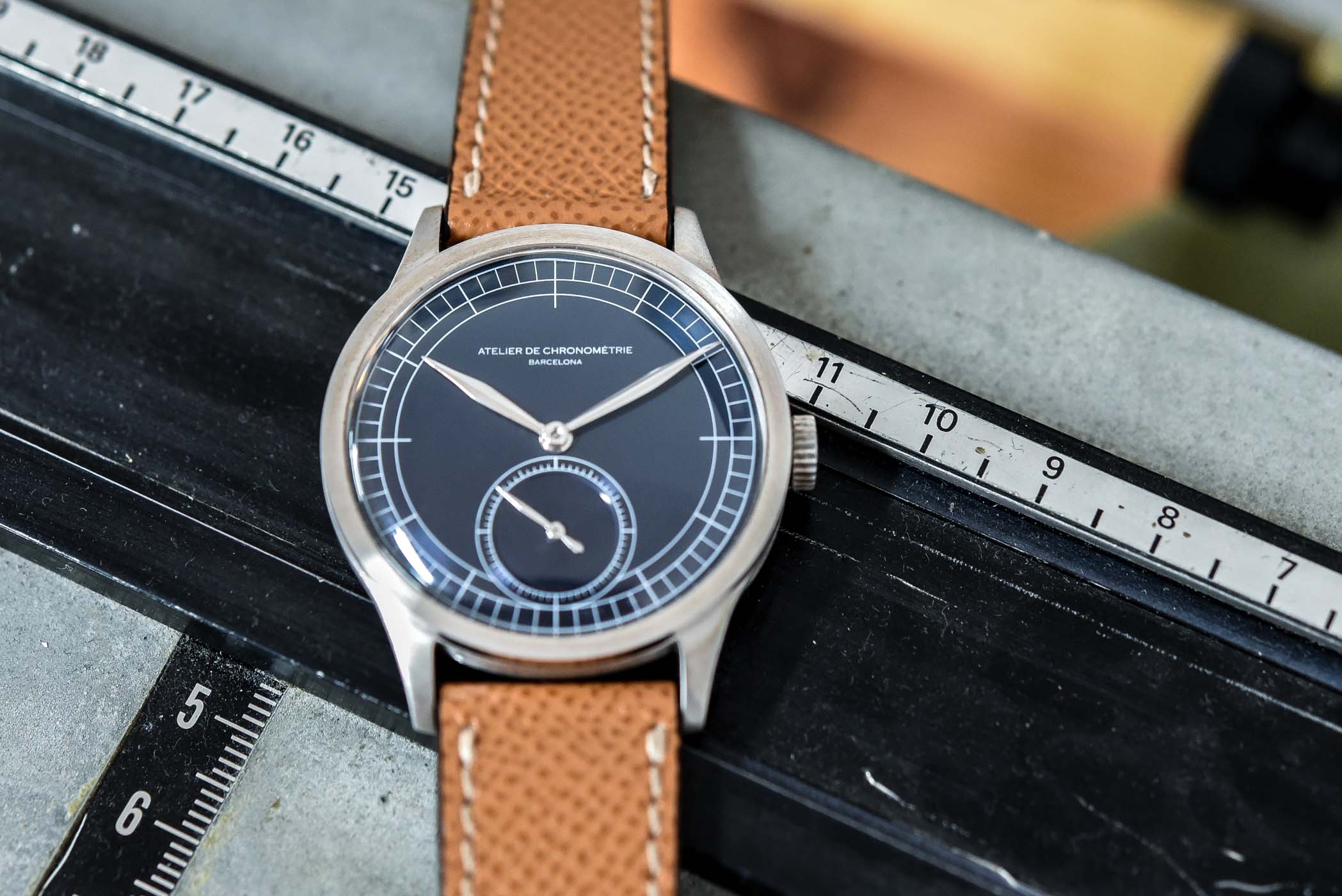
Hand-made… these two words are too often misused in the world of watches, but not so when talking about Beat Haldimann as we recently did, or when talking about Atelier de Chronometrie. The latter, a small independent watch brand from Barcelona, rebuilds or revives vintage Omegas, entirely by hand. Approximately a year ago, our managing editor Brice Goulard wrote about Atelier de Chronometrie and its (at that time) latest creation, the AdC #5. Today we’re taking a look at two similarly hand-made, rebuilt timepieces based on vintage Omega wristwatches from the 1950s, dubbed AdC #1 and AdC #2.
Last year I was in Barcelona and I had a few hours in between meetings. Since I’d heard about the brand, I reached out to Atelier de Chronometrie and luckily they had time to see me. Meeting with Santiago Martinez and Montse Gimeno of the brand, a couple living and working in downtown Barcelona, was a huge pleasure. Santiago is the brand’s creative director and takes care of customer relations, his partner Montse is AdC’s managing director and also takes care of communication. The core of AdC actually comprises a third person, Moebius Rassman, who is master watchmaker and technical director of AdC. They work together with several suppliers who, for instance, manufacture some of the movement parts. Key in all this, is that every Atelier de Chronometrie watch is hand-made in a traditional way, without the use of CNC machines. Here’s a screenshot of the Atelier de Chronometrie team on their website… the hands say it all.
Atelier de Chronometrie AdC #1 and #2
As all their watches, the AdC#1 and AdC #2, have been rebuilt based on a vintage Omega; in these cases, the bases were respectively Omega calibres 266 and 283. Both movements are so-called 13-lignes movements. ‘Ligne’ is an old French measurement unit, and converted to millimetres, those 13 lignes equal approx. 30 millimetre (which is quite large for vintage movements from the mid-twentieth century.) This also explains why the aforementioned Omega calibres are variants of the coveted Omega 30T2 calibres, relatively large, sturdy, reliable and very precise movements. While both movements measure approx. 30mm in diameter, the height is different. For calibre 266, in the AdC #1, the height is 4mm and for the calibre 283 in the AdC #2 the height is 5.65mm. The simple reason for this lies in the fact that additional wheels and a bridge are needed for this movement to feature a central seconds hand, and this adds approx. 1.5mm in height.
So for starters, an old Omega movement is disassembled and all parts are cleaned. Depending on the base movement, either three (cal.266) or four (cal. 283) bridges are made of Arcap, which will be 18k rose gold (or rhodium-plated). For calibre 266, 23 new parts are completely hand-made, without the use of CNC milling machines. For calibre 283 there are no less than 35 new hand-made parts. All the old parts that will be reused, are cleaned and completely modified and decorated by hand, using artisanal tools and methods. Basically not one part of the old movement will be reused without A) being replaced by a newly made part or B) being fully stripped and refinished and decorated by hand. This means traditional frosting, bevelling, polishing, perlage and even black polish on some flat surfaces, and the main plate will be adorned with côtes circular. That’s quite a big deal, as this is how watchmaking “used to be” and unfortunately it is rather rare these days.
Every time you need a new wheel, you start from scratch….
The bridges on every Atelier de Chronometrie are unique and are cut by hand; the holes for jewels, pinions, and screws, have to be drilled by hand; bevelling, polishing, other finishing and decorations are applied by hand; and finally coated (18k gold or rhodium). Of course, the jewels have to be pressed in, and all other parts must be fit and secured.
I guess that these images show pretty well why a watch made by Atelier de Chronometrie will come at a price. Making a watch by hand takes time, a lot of time, and the person doing it has to have a lot of experience and must be very skilled. Atelier de Chronometrie does not design its own movements, like aforementioned Beat Haldimann (or Roger Smith or Philippe Dufour), however, and this is an important factor, the traditional watchmaker’s work is still done by hand in the classical way.
The base movements used by AdC are known for chronometer qualities and are as such, a very good starting point. AdC’s own titanium balance wheel (hand-made) is inspired by the old pocket watches and its six “masselottes” are handmade in 18k rose gold. The escape wheel is bevelled and polished by hand, tooth by tooth. The ratchet wheel is also cleaned and polished to meet with AdC’s standards.
While there are probably a few AdC pieces finished, maybe three or four, these mainly serve as showcases for what the brand is capable of. When you want to purchase an Atelier de Chronometrie timepiece, you get to choose the movement, the design and finishing of the bridges, the design of the dial, hands, case, lugs, and more. Being able to have so much say in your future watch is the real definition of luxury that goes far beyond a prestigious name on the dial. You can even choiose to have your watch tested and certified by the Besançon Observatory!
I’ve chosen to show the AdC #1 and AdC #2 because these show a world of difference. Different dials, central seconds hand versus a small off-centre seconds hand, different case materials and sizes (18k white gold or red gold, 37.5mm or 40mm) and the different movement finishes, bridge designs, etc. A price of approx. 40,000 EUR for a round gold watch with 3 hands is not cheap, however, when you consider the amount of time, creativity, skilled work and choice for the customer, it’s actually unparalleled.
More information on the Atelier de Chronometrie website and make sure to follow them on Instagram here.

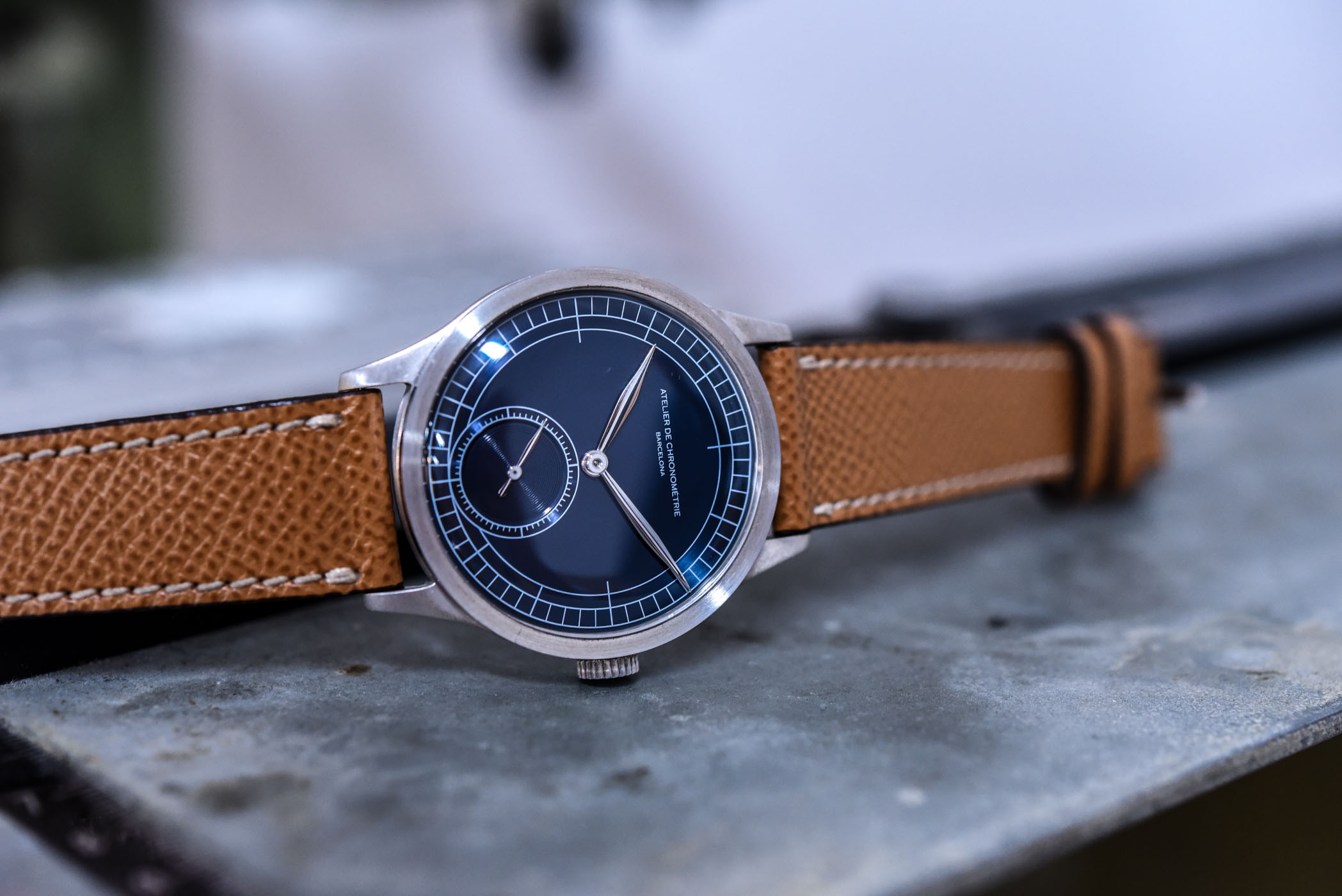
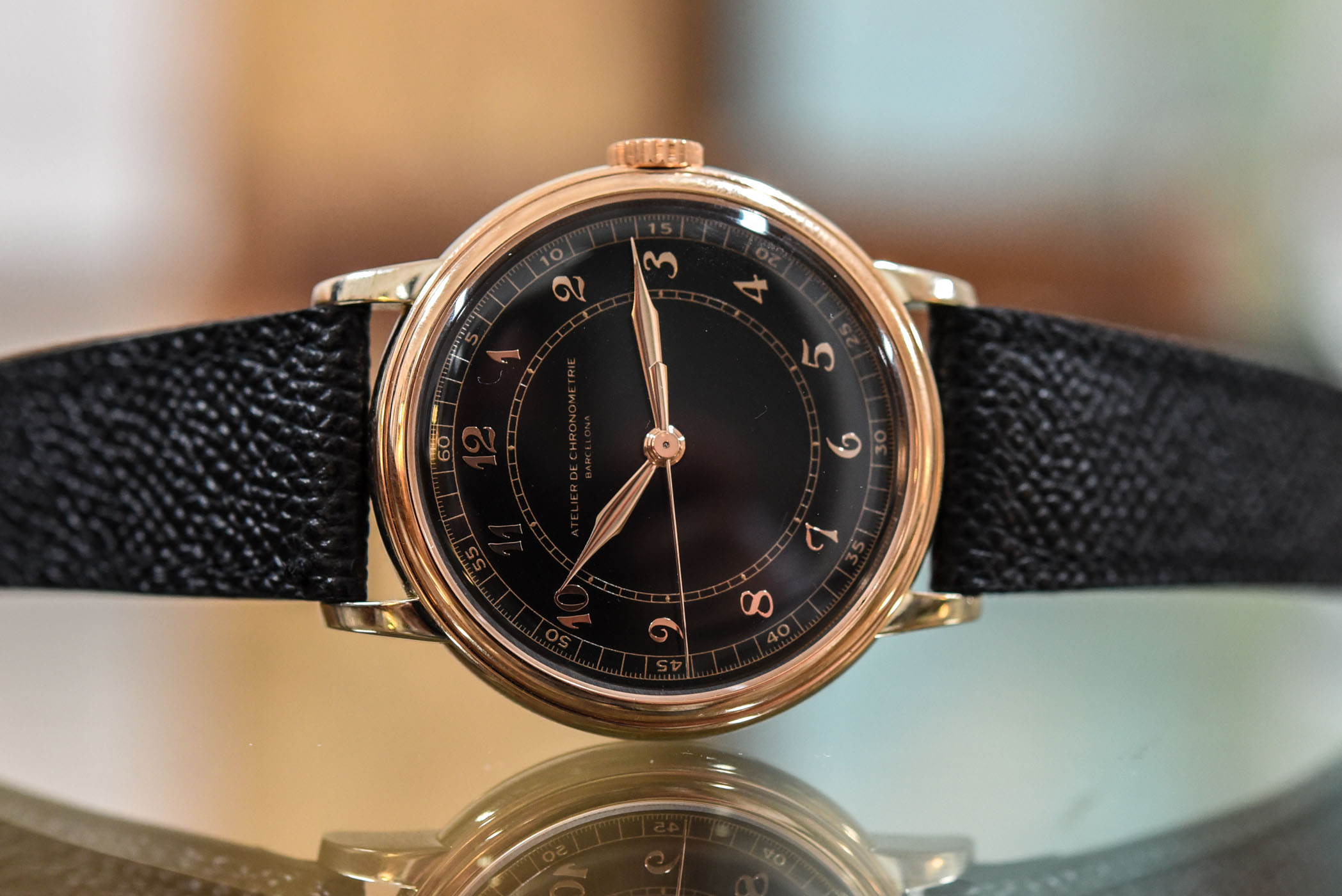
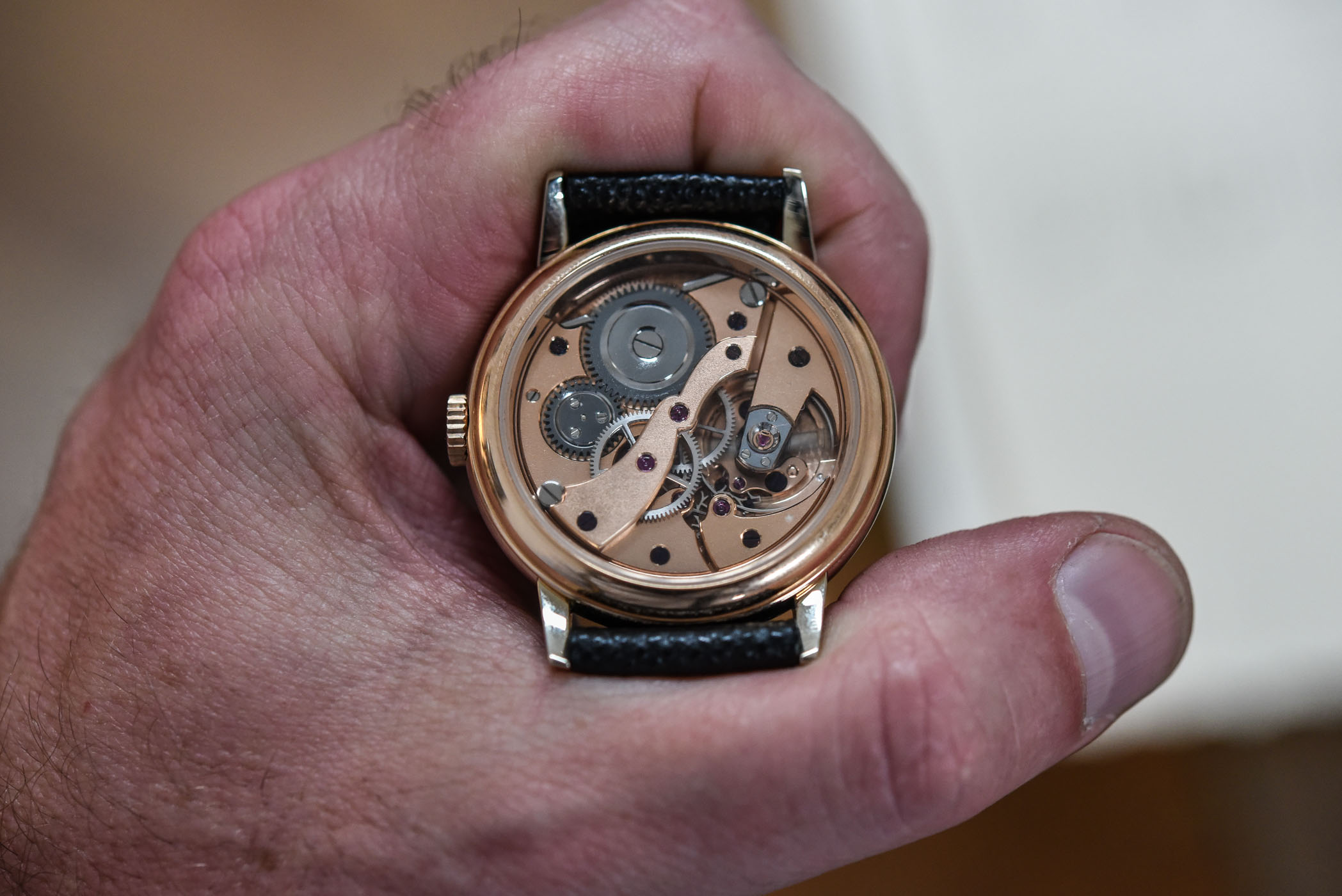
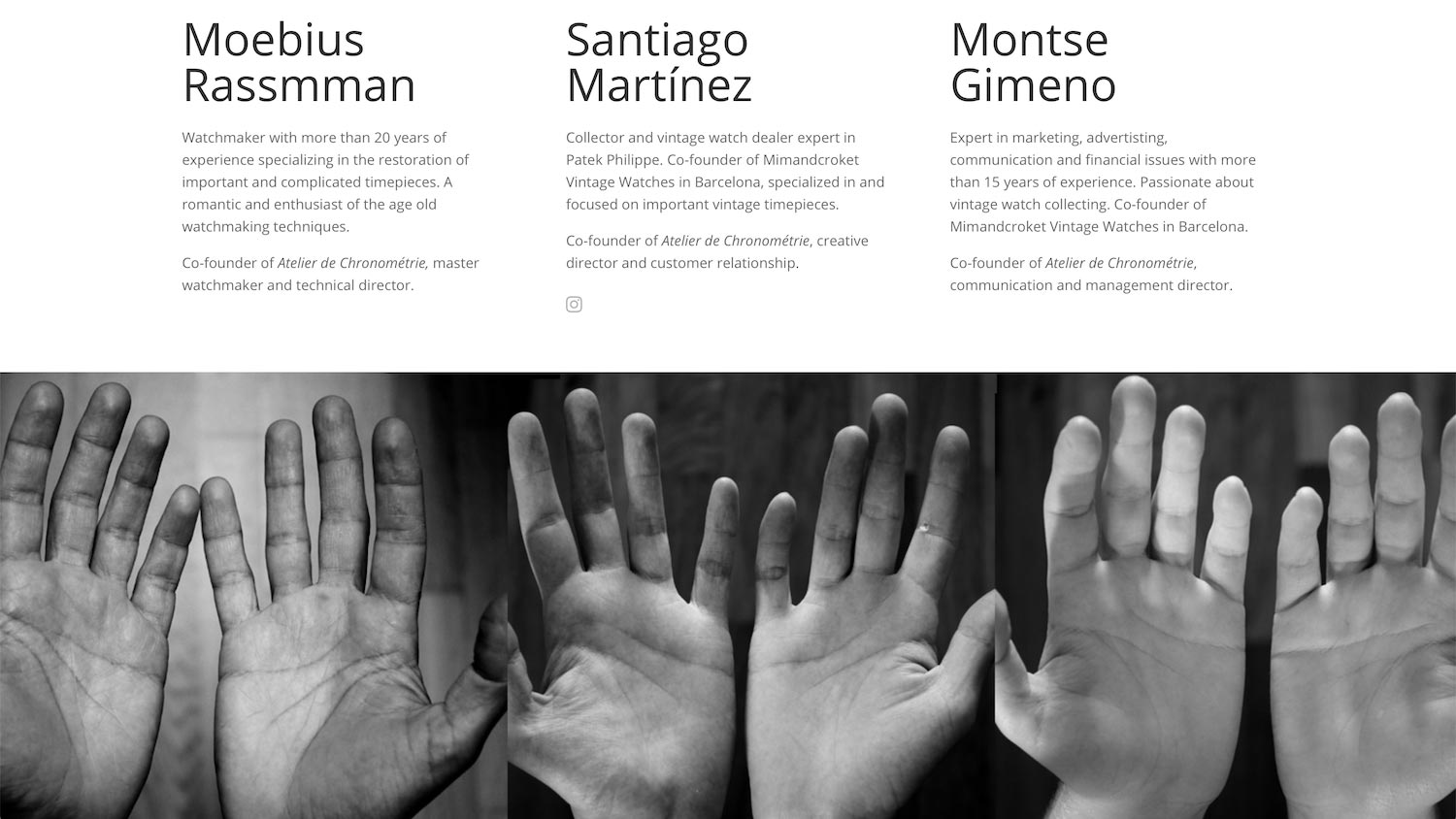
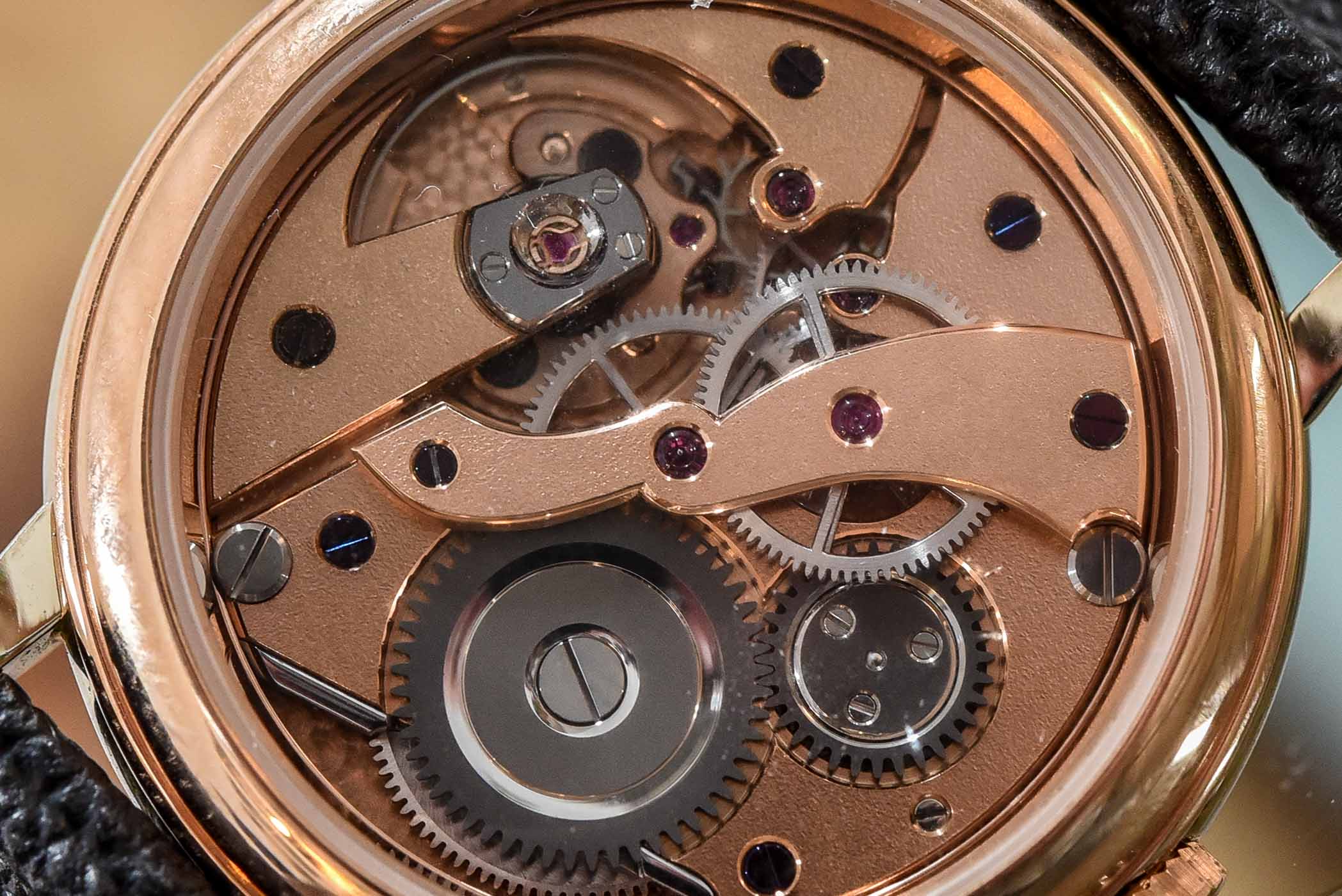
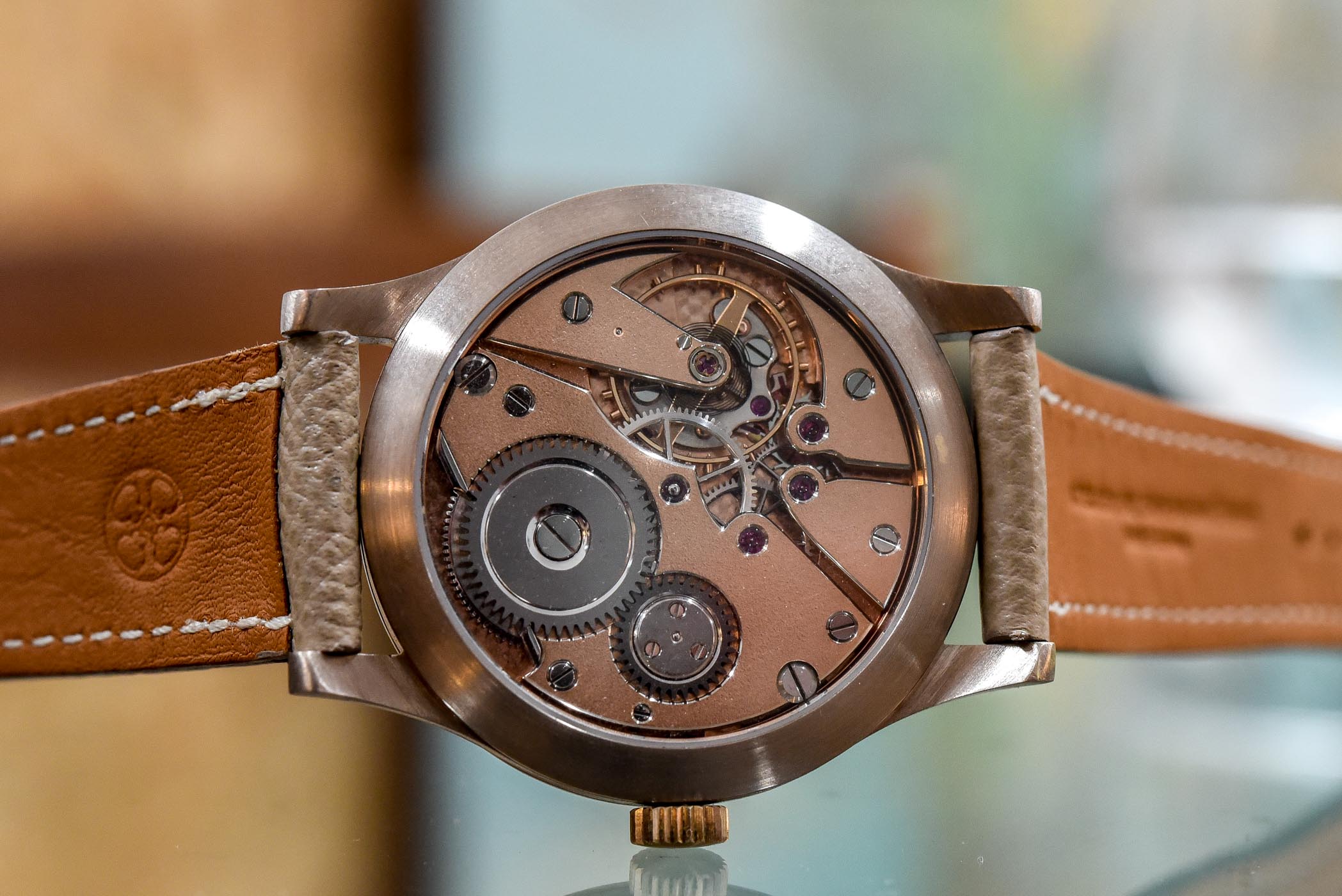
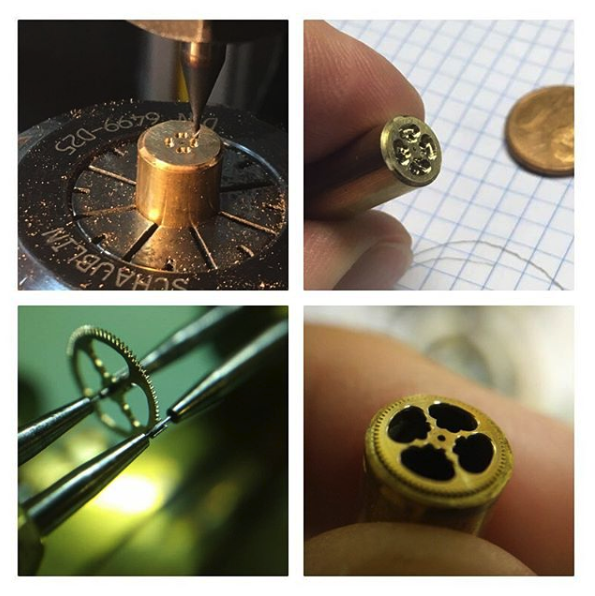

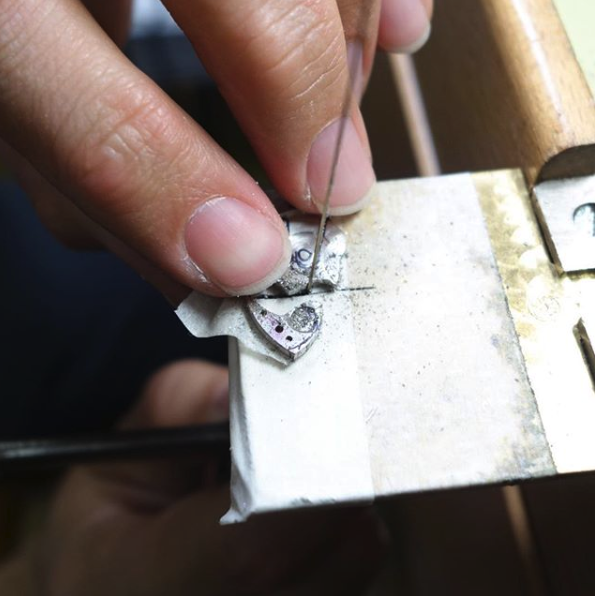
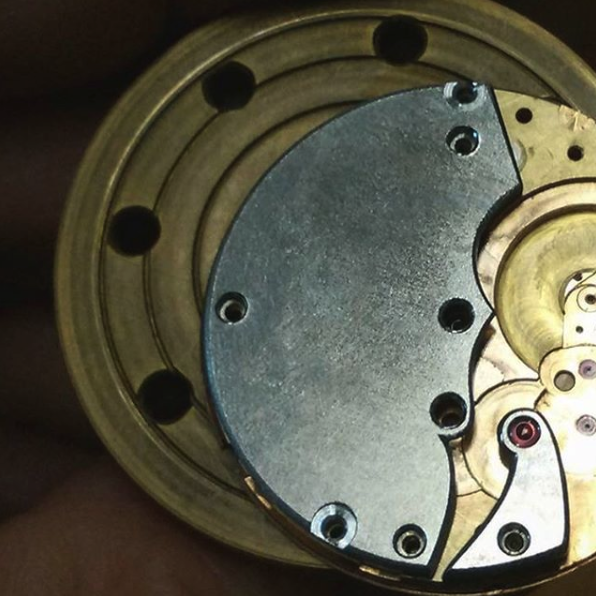

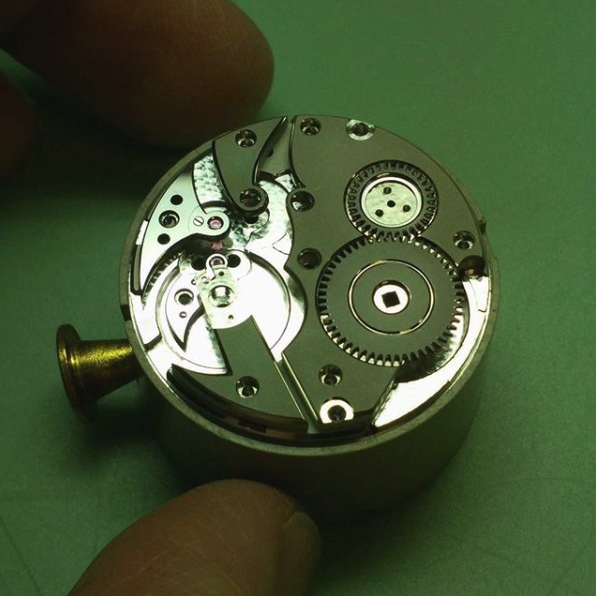
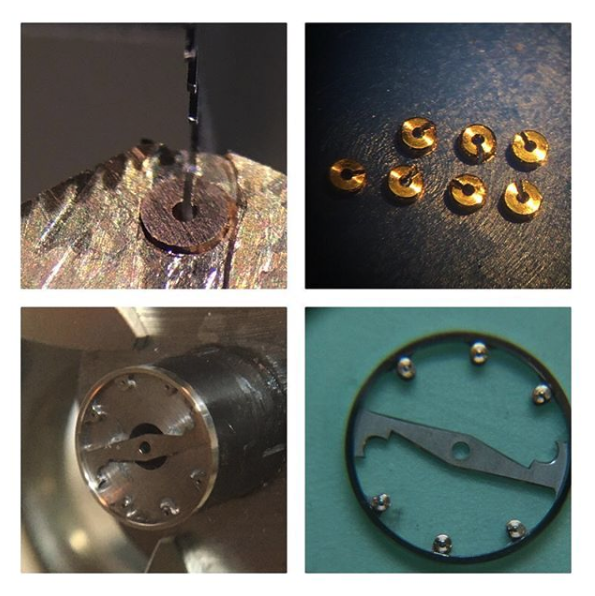
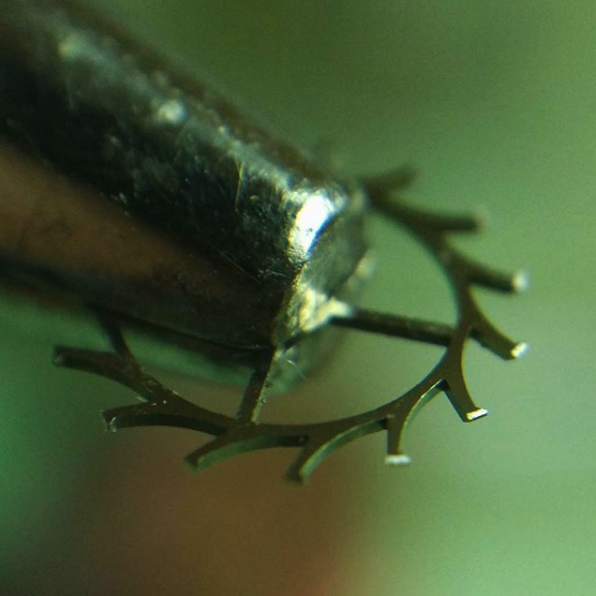
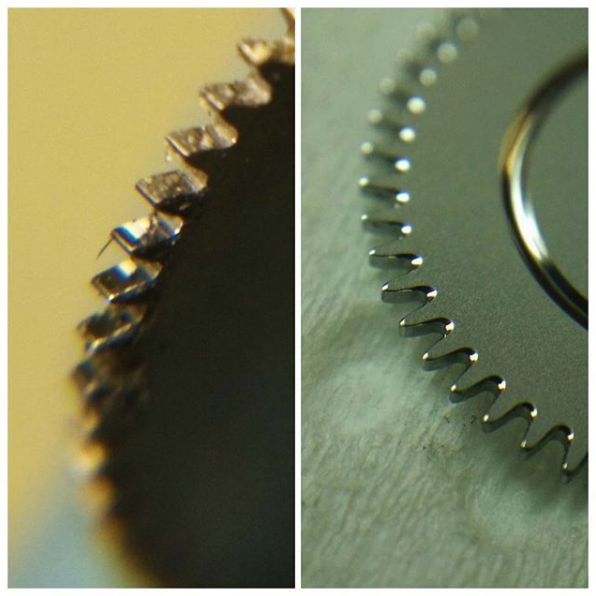




7 responses
Nice but way way too overvalued.
Hmm so I can sell my Dad’s watchmaker master piece for that price tag? He made his matchmaker master back in the 60s so everything is done by hand.
For that price, even given the manual input, it would surely be better to make a proper in-house modern movement. A Beat Haldimann H11 or H12 is surely greatly to be preferred to a re-build of an old, and only ‘relatively’ robust and precise movement!?
I wish them good luck. Who would ever pay that kind of money for a product that is just a restored and re-branded vintage Omega? I understand the enormous amount of hand work and the customization -although quite limited to a few frills – that makes each watch a unique product, however I do not feel the emotion or the authenticity or the innovation/creativity input to justify such a high price tag as I do when considering a Laurent Ferrier or H.Moser & Cie for example which are brands that offer products in the same price range.
I strongly suspect that the profit margin in this watch is lower than on any industrially-produced luxury watch such as Rolex or Vacheron Constantin. I would also dearly love to know exactly how handmade a Laurent Ferrier actually is. This watch looks handmade and this gives me pause. IF the people at LF do actually produce all their balance wheels and movement parts entirely by hand from a square piece of metal, they do it wonderfully. If not, the Atelier de Chronometrie might be the most honest luxury watch one can buy.
You’d have to be soft in the head to buy this at that price. P**s-take.
@Just another guy on the web
I agree with you. “Hand-made” is much different to “hand-finished”. Hand-finished watches are already rare and expensive, but hand-made watches will only be even rarer and more expensive.